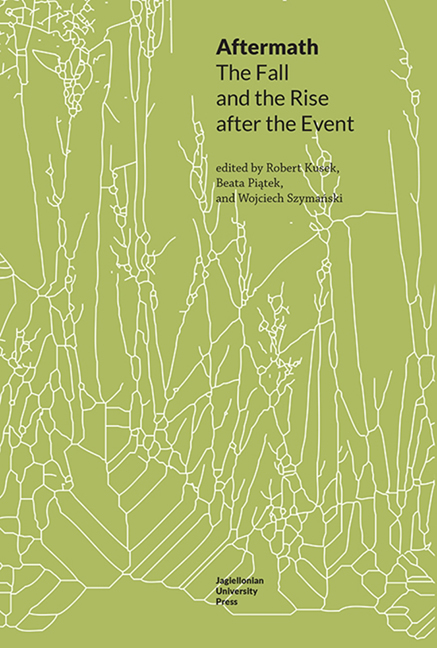Grande Dame Guignol and the Notion of the Aftermath: A Case Study of Robert Aldrich's Hush…Hush, Sweet Charlotte (1964)
Published online by Cambridge University Press: 06 November 2021
Summary
The year 2017 marked the 55th anniversary of cinematic release of What Ever Happened to Baby Jane? – Robert Aldrich's cult film starring Bette Davis and Joan Crawford, which was the first of numerous productions representing a new subgenre of thriller, that is, the so-called Grande Dame Guignol, also known as hag horror or psycho-biddy. The name itself was a conjunction of two main elements: “a lady of advanced age with dignity and prestige” and “a French theatre company famed for its depiction of graphic violence that ranged from burning of skin to mutilations, beheadings, dismemberments, and the like” (Berns, Pagnoni, Lando, and Foronda 2018: 142). Grande Dame Guignol films, despite their relatively short period of popularity (and, usually, bad publicity), left an indelible mark on cinema in general. What contributed to their popularity was not merely their excessively camp aesthetics but also their exploitative nature, for they focused on the widely-understood decay and dilapidation of both female characters and their surroundings. Peter Shelley explains:
The role the actress plays in Grande Dame Guignol either presents her as a mentally unstable antagonist or as the Woman in Peril protagonist. The grande dame as unstable antagonist may pine for a lost youth and glory, or she may be trapped by idealized memories of childhood, with a trauma that haunts her past. She is akin to Miss Havisham in Charles Dickens's novel Great Expectations, her adult life wasted as she rots away in her unused wedding dress in her room. Like a ghost, the grande dame cannot rest until the unbalance of the universe is corrected. A refusal to accept reality and the natural process of life exemplifies the fear of aging and death, and implicitly a fear of women. (Shelley 2009: 8)
Indeed, hag horrors unashamedly exploited their female protagonists/ antagonists, portraying them as ill, unstable, or simply corrupt, most frequently as a result of some dramatic past events. The fact that the leading roles were played by aging actresses of the Classical Hollywood era strengthened the genre's poignancy. Almost immediately Baby Jane became a template for an outpour of similar films.
- Type
- Chapter
- Information
- AftermathThe Fall and the Rise after the Event, pp. 319 - 330Publisher: Jagiellonian University PressPrint publication year: 2022



